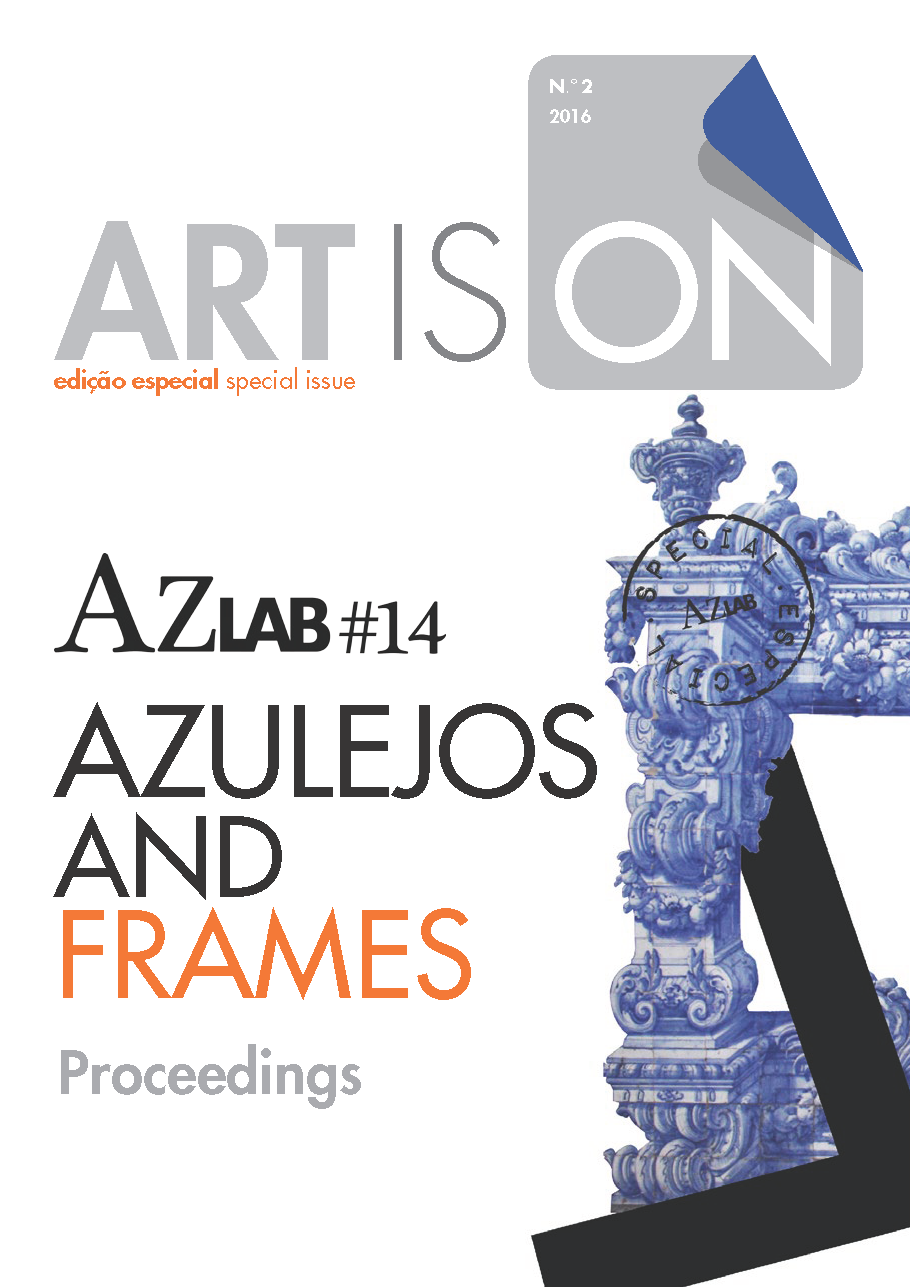

Azulejo frames, as understood in the context of theAzLab#14 conference, which was in the origin of this special issue of ARTis ON journal, refer to the word frame as used in Art History. Border azulejos is the more “technical” and consecrated term to designate painted or outlined tiles which, regardless of their shape, enclose a figurative, ornamental or patterned composition, just to mention the three main axes in the development of azulejo decorative motifs.
As in the wider context of frames studies, azulejo frames or borders are also regarded as areas of transition whose purpose is to separate or isolate, but which can also be used to join together and articulate different decorative elements.
The choice of the term frames, instead of border tiles, reflects the aim of opening azulejo studies to the more recent research perspectives and multidisciplinary debates surrounding the study of frames. It is about all these issues that issue 2 of ARTis ON journal is dedicated.